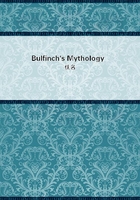
第117章
The distances of the various heavenly bodies from one another were conceived to correspond to the proportions of the musical scale. The heavenly bodies, with the gods who inhabited them, were supposed to perform a choral dance round the central fire, "not without song." It is this doctrine which Shakespeare alludes to when he makes Lorenzo teach astronomy to Jessica in this fashion:
"Sit, Jessica, look how the floor of heaven Is thick inlaid with patines of bright gold!
There's not the smallest orb that thou behold'st But in this motion like an angel sings, Still quiring to the young-eyed cherubim;Such harmony is in immortal souls!
But whilst this muddy vesture of decay Doth grossly close it in we cannot hear it."Merchant of Venice The spheres were conceived to be crystalline or glassy fabrics arranged over one another like a nest of bowls reversed. In the substance of each sphere one or more of the heavenly bodies was supposed to be fixed, so as to move with it. As the spheres are transparent, we look through them, and see the heavenly bodies which they contain and carry round with them. But as these spheres cannot move on one another without friction, a sound is thereby produced which is of exquisite harmony, too fine for mortal ears to recognize. Milton, in his Hymn to the Nativity, thus alludes to the music of the spheres:
"Ring out, ye crystal spheres!
Once bless our human ears;
(If ye have power to charm our senses so);
And let your silver chime Move in melodious time, And let the base of Heaven's deep organ blow:
And with your nine-fold harmony Make up full concert with the angelic symphony."Pythagoras is said to have invented the lyre, of which other fables give the invention to Mercury. Our own poet, Longfellow, in Verses to a Child, thus relates the story:
"As great Pythagoras of yore, Standing beside the blacksmith's door, And hearing the hammers as they smote The Anvils with a different note, Stole from the varying tones that hung Vibrant on every iron tongue, The secret of the sounding wire, And formed the seven-chorded lyre."See also the same poet's Occultation of Orion:
"The Samian's great AEolian lyre."
SYBARIS AND CROTONA
Sybaris, a neighboring city to Crotona, was as celebrated for luxury and effeminacy as Crotona for the reverse. The name has become proverbial. Lowell uses it in this sense in his charming little poem To the Dandelion:
"Not in mild June the golden-cuirassed bee Feels a more summer-like, warm ravishment In the white lily's breezy tent, (His conquered Sybaris) than I when first >From the dark green thy yellow circles burst."A war arose between the two cities, and Sybaris was conquered and destroyed. Milo, the celebrated athlete, led the army of Crotona. Many stories are told of Milo's vast strength, such as his carrying a heifer of four years old upon his shoulders, and afterwards eating the whole of it in a single day. The mode of his death is thus related: As he was passing through a forest he saw the trunk of a tree which had been partially split open by wood-cutters, and attempted to rend it further; but the wood closed upon his hands and held him fast, in which state he was attacked and devoured by wolves.
Byron, in his Ode to Napoleon Bonaparte, alludes to the story of Milo:
"He who of old would rend the oak Deemed not of the rebound;Chained by the trunk he vainly broke, Alone, how looked he round!"EGYPTIAN DEITIES
The remarkable discovery by which Champollion the younger (so called to distinguish him from his older brother, Champollion Figeac, who also studied the hieroglyphics)) first opened to modern times the secret of the Egyptian hieroglyphics, has been followed up by laborious studies, which tell us more of Egyptian worship and mythology, with more precision, than we know of any other ancient religion but that of the Hebrews. We have even great numbers of copies of the liturgies, or handbooks of worship, of funeral solemnities, and other rituals, which have been diligently translated. And we have a sufficient body of the literature written and used by the priesthood.
These discoveries give to writers of this generation a much fuller knowledge of the Egyptian religion, of its forms, and of the names of its gods, than they had before. It is impossible, and probably always will be, to state with precision the theology on which it rested. It is impossible, because that theology was different in one time and with one school from what it was at other times. Mr. S. Birch, of the British Museum, says, "The religion of the Egyptians consisted of an extended polytheism represented by a system of local groups." But Mr. Pierret says, "The polytheism of the monuments is but an outward show. The innumerable gods of the Pantheon are but manifestations of the One Being in his various capacities. Mariette Bey says, "The one result is that according to the Egyptians, the universe was God himself, and that Pantheism formed the foundation of their religion."In this book it is not necessary to reconcile views so diverse, nor indeed to enter on studies so profound as those which should decide between them. For our purpose here it is enough to know that the Sun was the older object of worship, and in his various forms rising, midday, or setting was adored under different names. Frequently his being and these names were united to the types of other deities. Mr. Birch believes that the worship of Osiris prevailed largely beside the worship of the Sun, and is not to be confounded with it. To Osiris, Set, the Egyptian devil, was opposed.